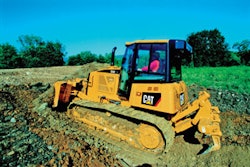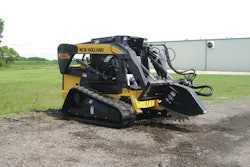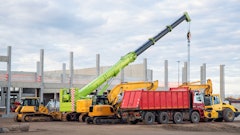Believe it or not, there are still contractors out there who neglect safety on their jobsites. Perhaps they believe taking time out for safety will cause them to miss scheduled deadlines. Or maybe they trust that their employees know what they're doing - that safety "just happens."
If this sounds a bit too familiar, take a step back and consider what this casual attitude may ultimately cost your company. Most construction firms failing to apply proper safety procedures are doomed to be caught eventually, either as a result of an OSHA inspection or due to a major incident on one of their sites. The resulting penalties could effectively cripple the business, with the negative publicity often dealing the final blow.
Even if you manage to escape such a fate, you may still be unknowingly driving your company out of business - or at least profits - one minor incident at a time.
The direct costs (i.e., medical expenses) of a minor accident can be minimal. It's the indirect costs (downtime, higher premiums, cost to repair damage to equipment or structures, etc.) that eat away at profit margins. One estimate equates the indirect costs of an accident to roughly five times the direct costs incurred. And these costs are almost never recovered.
As the number of incidents adds up, so do the indirect costs and their impact on your business.
Consider these questions: Has your insurance carrier ever cited the number of claims submitted as a reason for increasing premiums? Has the company ever had trouble securing bonding/capital because it's viewed as a "risky investment"? Has it ever been shut out of a project bid due to a poor insurance experience modifier rating? Or has it lost a job or customer due to a poor reputation for safety? If you can answer "yes" to any of these, it's time to make some changes.
Most contractors have a written safety program. But to be effective, the program must be matched to the projects you perform, and the procedures actively applied in the field. If you are following proper procedures, and your accident record is still too high, re-evaluate what you're doing and why.
First, dig into your company's accident history to identify when, why and how most accidents occurred. Identify any patterns and/or common safety risks, then work to mitigate any controllable factors (i.e., failure to wear proper PPE) behind the incidents.
Next, set measurable goals for reducing specific types of accidents. This will give you and your employees a target to work toward. Be sure to communicate these goals to all employees, then give them the training and tools they need to achieve them. Ask for and listen to employee suggestions for improving safety, and implement those that are viable.
Most important, make sure all employees understand and follow safety procedures. Clearly state the repercussions for failing to do so, then follow through on punishments. Conversely, consider implementing an incentive program to reward those with a proven track record of following safe practices.
For more specifics on how to "Put Safety to Work" on your jobsites, turn to the Running the Business column on page 66. Additional safety tips can also be found in the Construction Zone Safety guide included with this issue.




















